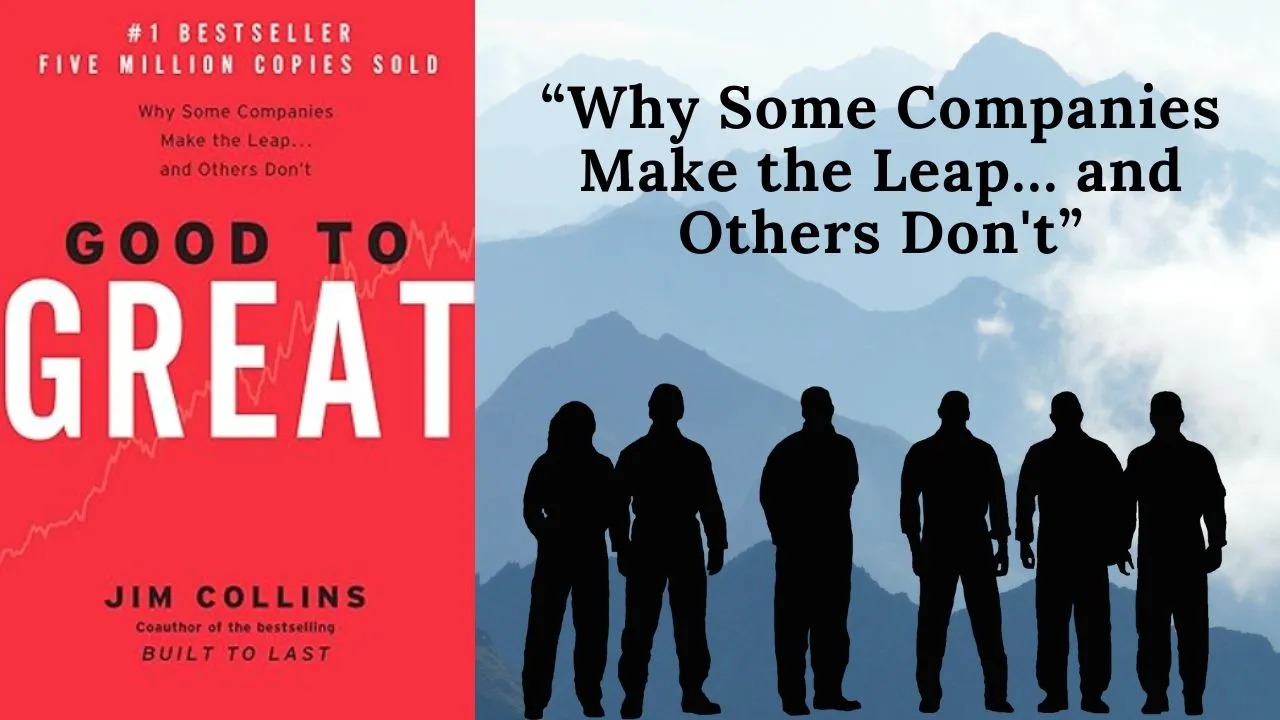Discover the essence of greatness with our concise “Good to Great Book Summary.” Uncover key insights in just a few minutes!
“Good to Great” by Jim Collins is a management classic that explores the factors that differentiate truly great companies from merely good ones. Drawing on extensive research and case studies, Collins and his team identified a set of principles and practices that distinguish companies that achieve sustained excellence over time. The book offers valuable insights for leaders and organizations seeking to make the leap from good to great.
Chapter 1: Good is the Enemy of Great
Collins begins by challenging the notion that great companies emerge from dramatic events or charismatic leaders. Instead, he argues that greatness is a result of sustained effort and disciplined execution. Good companies, he suggests, often become complacent and settle for mediocrity, while great companies continually strive for improvement.
Chapter 2: Level 5 Leadership
Collins introduces the concept of Level 5 Leadership, characterized by a unique blend of humility and fierce resolve. Level 5 leaders are driven by a desire for organizational success rather than personal glory, and they possess the ability to build enduring greatness through their leadership style.
Chapter 3: First Who, Then What
The importance of getting the right people on board before determining the direction of the company is emphasized in this chapter. Collins argues that great companies prioritize hiring and retaining talented individuals who share their core values and vision. Once the right team is in place, decisions about strategy and direction become much clearer.
Chapter 4: Confront the Brutal Facts (Yet Never Lose Faith)
Great companies confront reality head-on, even when it’s uncomfortable or unpleasant. Collins introduces the concept of the Stockdale Paradox, named after Admiral Jim Stockdale, which emphasizes the importance of maintaining unwavering faith in the face of adversity while simultaneously confronting the brutal facts of reality.
Chapter 5: The Hedgehog Concept
The Hedgehog Concept is introduced as a framework for achieving sustained success. Inspired by the ancient Greek parable of the hedgehog and the fox, Collins argues that great companies focus on what they can be the best in the world at, what drives their economic engine, and what they are deeply passionate about.
Chapter 6: A Culture of Discipline
Discipline is a key characteristic of great companies, according to Collins. He argues that disciplined people, disciplined thought, and disciplined action are essential for sustained excellence. This chapter explores how great companies cultivate a culture of discipline without becoming bureaucratic or oppressive.
Chapter 7: Technology Accelerators
While technology can be a powerful enabler of greatness, Collins cautions against viewing it as a panacea. Great companies use technology strategically to accelerate their progress and gain a competitive advantage, but they do not allow it to distract them from their core purpose or values.
Chapter 8: The Flywheel and the Doom Loop
Collins introduces the concept of the flywheel, a metaphor for the cumulative effect of consistent effort and momentum over time. Great companies build momentum slowly and steadily, eventually reaching a point where their success becomes self-sustaining. Conversely, companies trapped in the doom loop struggle to break free from a cycle of short-term thinking and reactive decision-making.
Chapter 9: From Good to Great to Built to Last
In the final chapter, Collins reflects on the enduring legacy of great companies and offers insights into how organizations can transition from being good to great to built to last. He emphasizes the importance of maintaining the core values and principles that drive greatness while remaining adaptable and open to change.
Conclusion:
“Good to Great” offers a compelling roadmap for organizations seeking to achieve sustained excellence. By focusing on leadership, team dynamics, confronting reality, strategic focus, disciplined action, and technological innovation, Collins provides valuable insights into what it takes to make the leap from good to great. Through a combination of research, case studies, and practical advice, this book has become essential reading for leaders and managers aspiring to build truly great companies.
If you want read full book you can buy from Amazon
More from Wisdom Imbibe Education:

